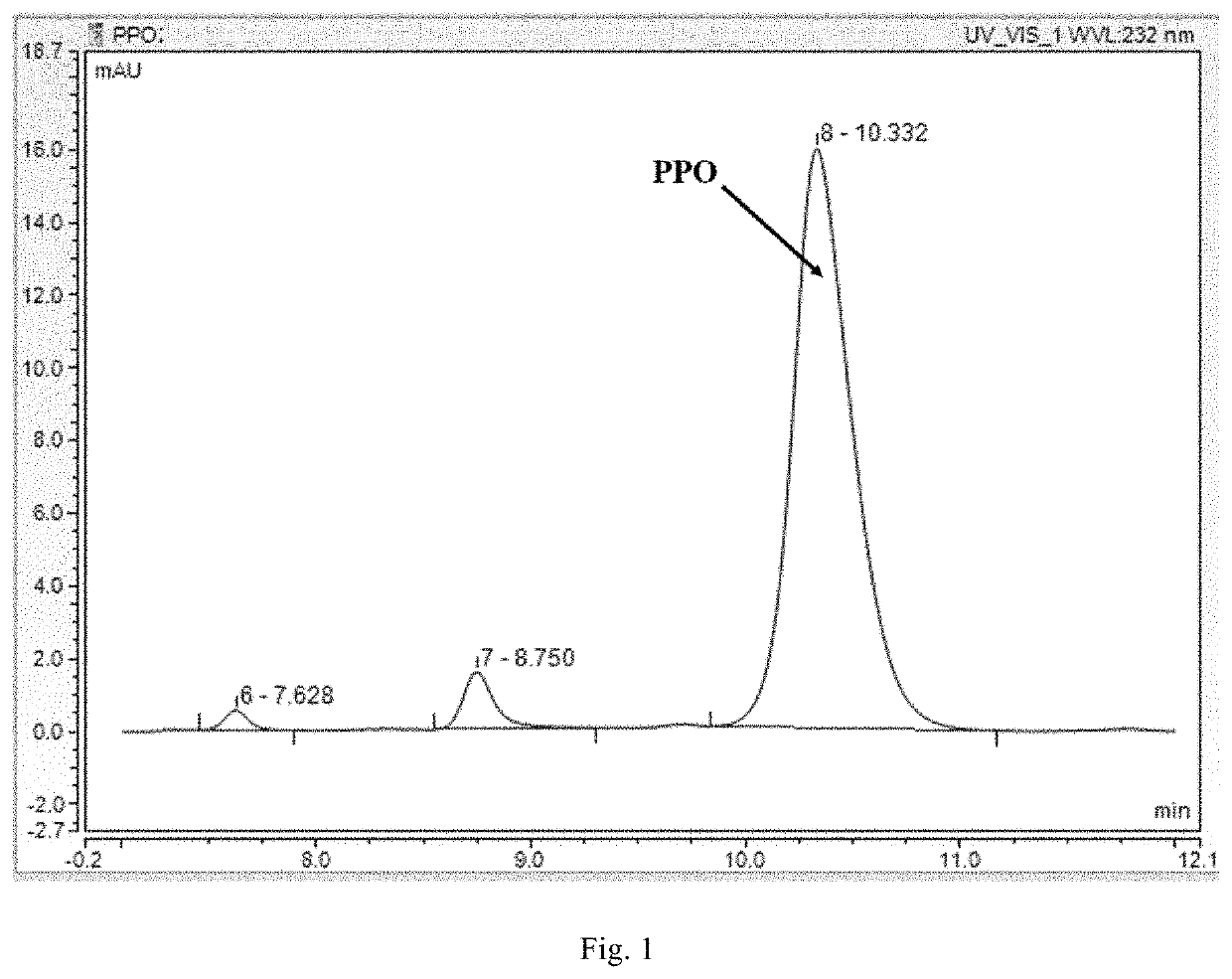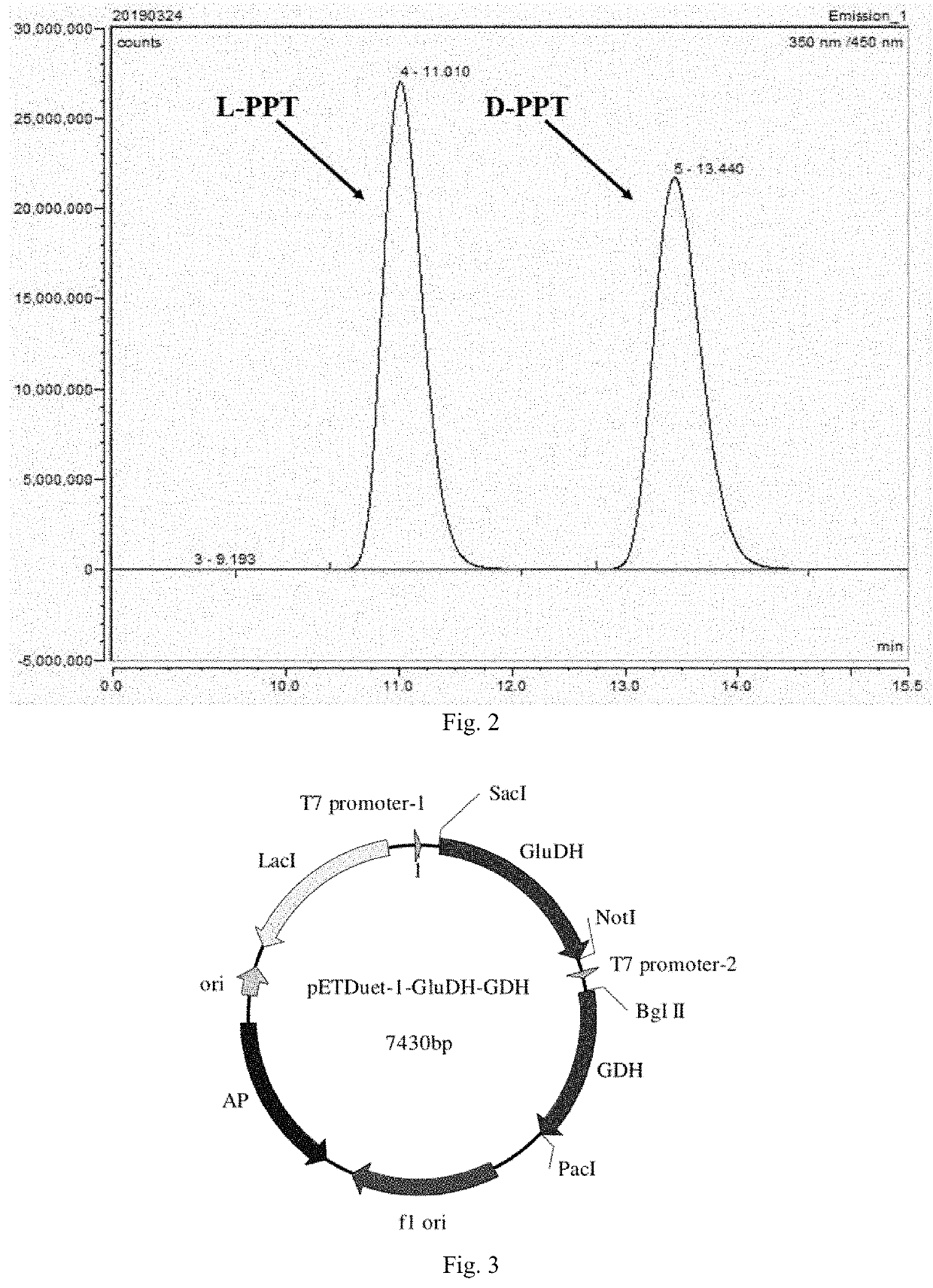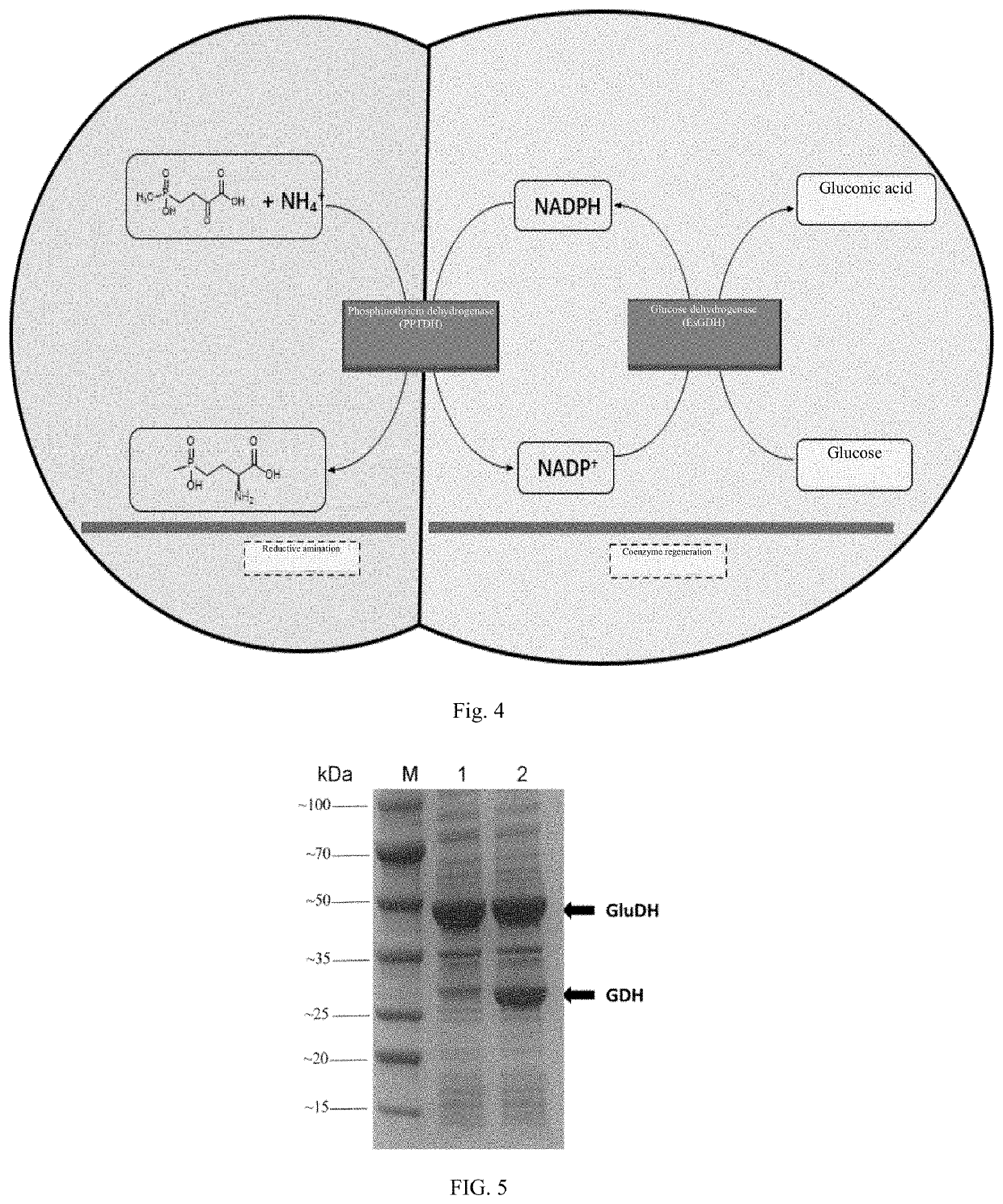Phosphinothricin dehydrogenase mutant, genetically engineered bacterium and one-pot multi-enzyme synchronous directed evolution method
a technology of phosphinothricin dehydrogenase and phosphinothricin dehydrogenase, which is applied in the field of one-pot multienzyme synchronous directed evolution method, can solve the problems of increased cost, waste of raw materials, and difficulty in chiral raw materials being needed
- Summary
- Abstract
- Description
- Claims
- Application Information
AI Technical Summary
Benefits of technology
Problems solved by technology
Method used
Image
Examples
example 1
[0047]Construction of Expression Vector and Engineered Bacterium with Coupled Phosphinothricin Dehydrogenase and Glucose Dehydrogenase or Formate Dehydrogenase
[0048]Construction of expression vector: The synthesis work involving phosphinothricin dehydrogenase, glucose dehydrogenase and formate dehydrogenase genes described below was conducted by Hangzhou TSINGKE Biological Technology Co., Ltd. The phosphinothricin dehydrogenase gene (NCBI accession number: WP_150701510.1) derived from Pseudomonas fluorescens was seamlessly cloned between SacI and NotI at the first polyclonal site of the pETDuet-1 vector by PCR, and the glucose dehydrogenase gene (NCBI accession number: KM817194.1) derived from Exiguobacterium sibiricum or the formate dehydrogenase gene (NCBI accession number: WP_013726924.1) derived from Lactobacillus buchneri was seamlessly cloned between BglII and PacI at the second polyclonal site of the pETDuet-1 vector by PCR to obtain the expression vector pETDuet-PPTDH-EsGDH ...
example 2
[0051]Construction and Screening of Coupled Phosphinothricin Dehydrogenase and Glucose Dehydrogenase / formate Dehydrogenase Double-enzyme Gene Library
[0052]1) Establishment of High-throughput Screening Method
[0053]Preparation of 50 mL of working solution (derivatization reagent): 0.013 g of o-phthalaldehyde and 0.032 g of N-acetyl-L-cysteine were dissolved with a boric acid buffer with pH=9.8 to a constant volume of 50 mL, shaken to fully dissolve, and stored in a refrigerator at 4° C. for later use (no more than 4 days) as a high-throughput working solution, also known as derivatization reagent. Then, 50 μL of the sample reaction mixture was added into 50 μL of the working solution to react under shaking for 30 seconds, and then 100 μL of ddH2O was added. The fluorescence value was measured at λex=340 nm and λem=455 nm.
[0054]2) One-pot Multi-enzyme Synchronous Directed Evolution
[0055]Comparative Example: PPTDH and EsGDH underwent directed evolution by using multi-enzyme stepwise dir...
example 3
[0061]Site-saturation Mutagenesis of Phosphinothricin Dehydrogenase in Multi-enzyme Coupling Reaction System
[0062]In order to further screen strains with potentially improved activity, the two beneficial mutation sites A164 and R205 of phosphinothricin dehydrogenase obtained in Example 2 were subjected to site-saturation mutagenesis for further screening, with the PCR primer design shown in Table 1. The PCR system (50 μL) was as follows: 25 μL of 2*Phanta Max buffer, 1 μL of dNTPs, 1 μL of each of the upper and lower primers for mutation, 1 μL of template (original strain), 0.5 μL of Pfu DNA polymerase, and ddH2O making up to 50 μL. The PCR conditions were as follows: pre-denaturation at 95° C. for 3 minutes; denaturation at 95° C. for 15 seconds, annealing at 60° C. for 15 seconds, and elongation at 72° C. for 7 minutes and 20 seconds, 30 cycles; final elongation at 72° C. for 10 minutes. The PCR product was verified by DNA agarose gel electrophoresis. After the template was digest...
PUM
| Property | Measurement | Unit |
|---|---|---|
| Fraction | aaaaa | aaaaa |
| Length | aaaaa | aaaaa |
Abstract
Description
Claims
Application Information
 Login to View More
Login to View More - R&D
- Intellectual Property
- Life Sciences
- Materials
- Tech Scout
- Unparalleled Data Quality
- Higher Quality Content
- 60% Fewer Hallucinations
Browse by: Latest US Patents, China's latest patents, Technical Efficacy Thesaurus, Application Domain, Technology Topic, Popular Technical Reports.
© 2025 PatSnap. All rights reserved.Legal|Privacy policy|Modern Slavery Act Transparency Statement|Sitemap|About US| Contact US: help@patsnap.com



